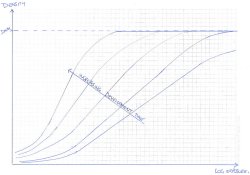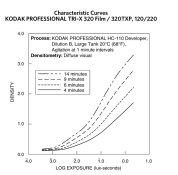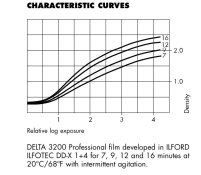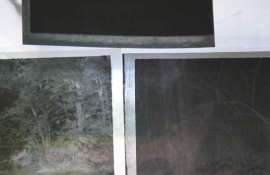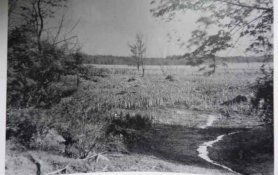Hi folks,
I was rather annoyed at myself to discover that I over exposed a 120 roll of HP5+ by a whopping 4 stops ! The good news is that I think my highlights will not be compressed at all but I wanted to run my solution past you.
The SBR was 7 stops from Zone II to VIII inclusive which would have otherwise lead to Normal (N) development time.
In short I plan on reducing the film development time to be that for N-1 which in my process will lower the gamma from 0.5 to 0.4
Below you can see my analysis, but I am amazed that I can still keep my scene in the straight line portion of the curve by forcing a minor reduction to its CI/gamma/slope. I will just print using 1 grade harder MG filter. What am I going to lose out on here ? This seems too easy to recover from.
** warning that a bit more theory and maths will now follow... **
I have analysed the HD/characteristic curve of HP5+ and it is linear out to at least a density of 2.1 log units which has basically been my saving grace here. Normally a neg exposed for N development in my process would result in a density ranging between 0.3 and 1.35 on the neg. [gamma=(1.35-0.3)/(7x0.3)=0.5]. 1.35 is nowhere near 2.1 but 4 stops over exposing would put the density right on 2.1, however if I reduce the gamma to 0.4 and calculate the range for Zone II to IX, you will see it comfortably makes it in. I am calculating from zone II up to Zone IX (i.e. an 8 stop range) as I want to include even the last nuance of detail in my highlights. So here is the formula:
Gamma=0.4=(D_zone_IX_end - D_zone_II_start)/((4+8)x0.3)
0.4=(D_zone_IX_end - 0.3)/((4+8)x0.3)
D_zone_IX_end = 1.74.
Now because D_zone_IX_end<2.1 , I should be OK. In fact because I still have a bit of wiggle room I could develop to N-0.5 which would give D_zone_IX_end = 1.92 Developing for N would put D_zone_IX_end right at a density of 2.1 and permit no room for any error in dev time/temperature/age/minor film exposure variations etc.
regards
Peter


